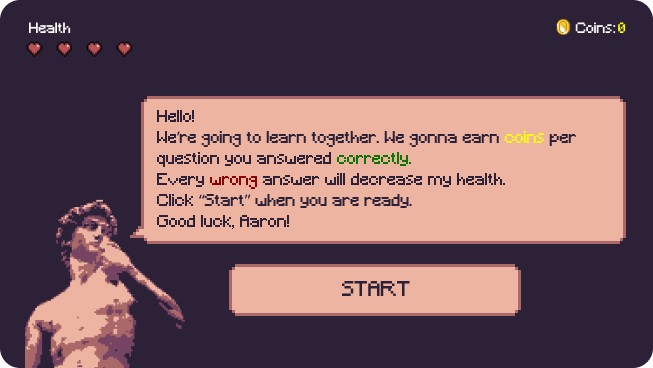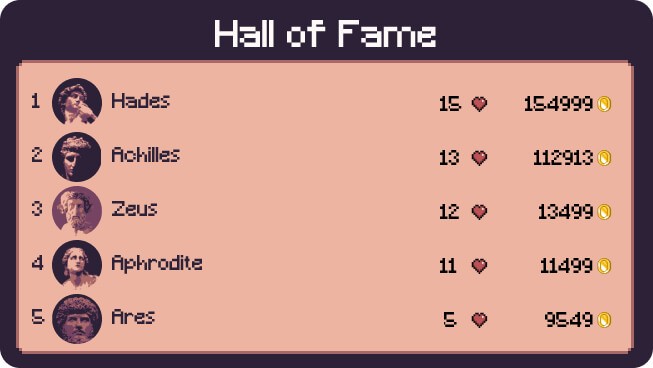Modern online learning services are gradually moving away from the classic "start-to-finish" scheme. Users have greater freedom of choice. But at the same time, there is a problem with mindfulness, as students are less and less focused on the learning process. Therefore, there are more and more opportunities to attract students. One of them is gamification. Let's look at what it is and how to use game mechanics in the learning process.
The Basics of Gamification
Gamification uses game formats and mechanics to increase engagement in the online learning process and achieve specific goals for students. The result is the high coverage and the growing popularity of training videos! It makes e-learning courses more exciting.
At the same time, gamification is not only tests and quizzes. It includes a much more comprehensive range of simple and complex scenarios, from rapid-fire questions to game simulations. Despite the choice of mechanics, all this leads to only one thing - the attraction and motivation of students. That's why gamification is so widely used in online education.

Eastern Europe quickly picked up the Western trend towards gamification, as it is closely related to the concept of interactivity - the possibility of dialogue, motivation and student engagement. Meanwhile, game mechanics will become more and more in demand in the coming years. According to MarketsandMarkets, the global gamification market will exceed $30 billion by 2025.
Benefits of Gamification for Students
First and foremost, we're talking about the more fun parts of the learning process. That's why people choose online education. Some course creators still don't appreciate the value of gamification, so they ignore game mechanics. Moreover, they ask the following questions:
- How effective is gamification?
- Will game mechanics help increase learning engagement and student performance?
- Does gamification provide benefits to students and e-learning creators?
But the fact remains that the success of any educational strategy depends on how it's applied. A well-designed gamification strategy has the following features:
- It attracts and retains the attention of students.
- It challenges them.
- It ensures the completion of the course and the acquisition of essential skills.
- It truly teaches through games.
That's the only way to satisfy students and raise the popularity of the online course. And their percentage will be pretty significant. According to the Polytechnic Muadzam Shah Pahang University in Malaysia, about 80% of students agree that gamified learning is more productive than regular learning. At the same time, 67% also note that a course with gamification motivates much more than a classic set of training videos.
Also, game mechanics speed up the process of mastering new skills almost twice. That's proved by the results of a study by Deloitte.
How To Use Gamification in Online Learning
When it comes to online courses or training videos with game elements, we usually don't mean a full-fledged video game. It's just about taking the elements that make games fun and motivating and adding them to the learning process. Most often, the following elements are added to e-courses:
Stories
Remember the math course in elementary school, where each problem had its plot? It works for an older audience too! Create a unique storyline that engages and invites students on a journey. The plot can be divided into separate stages tied to individual sections of the online course. Therefore, creating a compelling story is a great way to create and maintain high engagement. You can also create characters or avatars to represent students of your course.
Visual Effects
A person perceives 75% of information through sight. Therefore, the visuals and attractive design will make your courses stand out from others. What's more, vibrant and colourful graphics play a critical role in learning. They increase student engagement and satisfaction with the learning process.
Competition Elements
Healthy competition has never harmed anyone yet. Let your students compete with other students, anonymous learners and even themselves! All this keeps a high level of motivation and allows you to achieve high results. In this regard, it's an excellent idea to create a rating table. By seeing the online course leaderboard, your students will see how hard they try against their friends.

Solving a Real Problem
Give your students frequent and easy tasks, gradually increasing the difficulty level as they progress through the lesson's topic. This approach not only helps understand the real problem but also prepares students for complex tasks. Meanwhile, you can be sure that they will use the knowledge gained to solve problems.
Rewards
These can be new levels, badges or virtual medals. This incentive helps increase motivation and can keep student engagement at a reasonably high level. The principle of encouraging makeshift awards has been familiar for decades, but it still shows high efficiency when used correctly.
Feedback
When a student completes an assignment or test, it's important to have instant feedback. It keeps students focused and invites them to track their progress during the passage of different stages.
4 Best Examples of Gamification in E-learning
Now let's move from theory to practice. There are a lot of good gamification integration cases; you can easily count several dozen of them. However, let's switch from wild speculation to actions and present 4 top examples of gamification in online learning that include the above game elements.
1. Game Quiz With Badges as a Motivational Instrument
The classic quiz is used in both traditional and online education. But when can it turn into a really addicting game? The visual rewards and scoring system and the motivational elements may provide significant benefits. For example, you can set a timer that counts down to the end of the quiz.

This kind of game mechanic is used for all types of online learning, as it is a traditional test, but in a modern and attractive cover.
Why does this gamification work?
- You can add not only text questions but also video or audio questions. They greatly expand the possibilities of the classic quiz.
- This approach struck a balance between giving the student a certain amount of time to think and a strict time frame for the test. All of this is also increasing competition for online courses.
- The student's path has two main goals - to set as many badges as possible and win them for completing tasks.
2. Scenario + Game Elements = Sales Simulation
It's another straightforward game mechanic that is used together with a specific scenario. All this creates the most realistic learning environment in which the creators of many online platforms are interested.
Why is this model highly efficient? There are three reasons:
- The combination of a ready-made script with gamification creates a sense of competition and urgency. It allows you to connect real-life examples with skills training.
- In this regard, there is simply no characters. The characters are the students themselves. Therefore, the game can be transferred to any virtual environment because the stakes are pretty high.
- For such a simulation, it is necessary to use high-quality graphics and a soundtrack.
3. Improving Professional Skills: The Basics of Account Management for Project Managers and Account Managers
Let's take a look at a great example of layered gamification. Different levels reflect the skill level of the students as they progress through the course.
Why does such a system work successfully?
- The learning process is based on scenarios and tasks that are quite possible in real life.
- The educational tunnel "theory - practice - work" is a characteristic of classical education. But modern educators don't waste hours explaining theory. In online learning, you can start solving a problem almost immediately. It allows the learners to understand how much they are involved in solving the problem. If you have any questions, you can always get expert advice.
- Creators add the well-thought-out content for the e-course. Students can return to the educational platform and brush up on their own knowledge.
4. Partial Gamification: Features of Gaming Activities
Now is the time to learn how you can stimulate your education business through partial gamification tools. Let's consider the question using the example of a time management course. The use of game mechanics during training dramatically increases the involvement of students in the process of learning.
Why is this example so practical?
- Adding a minigame increases the level of concentration on tasks. In the case of a time management course, students need to identify so-called "time wasters". You need to choose these activities and match them with the flying clocks that appear from different screen sides. It's not only fun but also affects the final grade for the lesson. The more you skip floating clocks, the lower the final score.
- Unlike the standard "drag-and-drop" scheme, interactions with moving objects look much more enjoyable. It encourages learners to perform the task carefully and have an excellent online learning practice.
Conclusion
The concept of "gamification" is often implemented in the following way:
- We take an existing algorithm of actions (for example, learning a foreign language or fitness).
- Add improvised game rewards in the form of medals, scores or badges.
- PROFIT!
After that, course creators think that life will become more accessible and more fun. Learning will instantly become highly effective, and students will say a big "thank you". It's not that simple.
Gamification is not just a cure from boredom but an effective business tool with many benefits. Moreover, game mechanics won't stop at ordinary computer graphics, ratings and minigames. Online learning platforms using VR are already being tested. It's possible that very soon, students will be able to experience total immersion in new topics.
Meanwhile, one shouldn't forget the measure. Sometimes you need to be strict, but it's also not worth turning mastering skills into a continuous party. Use game mechanics only when you spice up a serious activity or explain a rather complex topic. Only then students will attend your online lessons with great interest. And next-generation educational platforms help you launch your first e-course in just 30 minutes.


